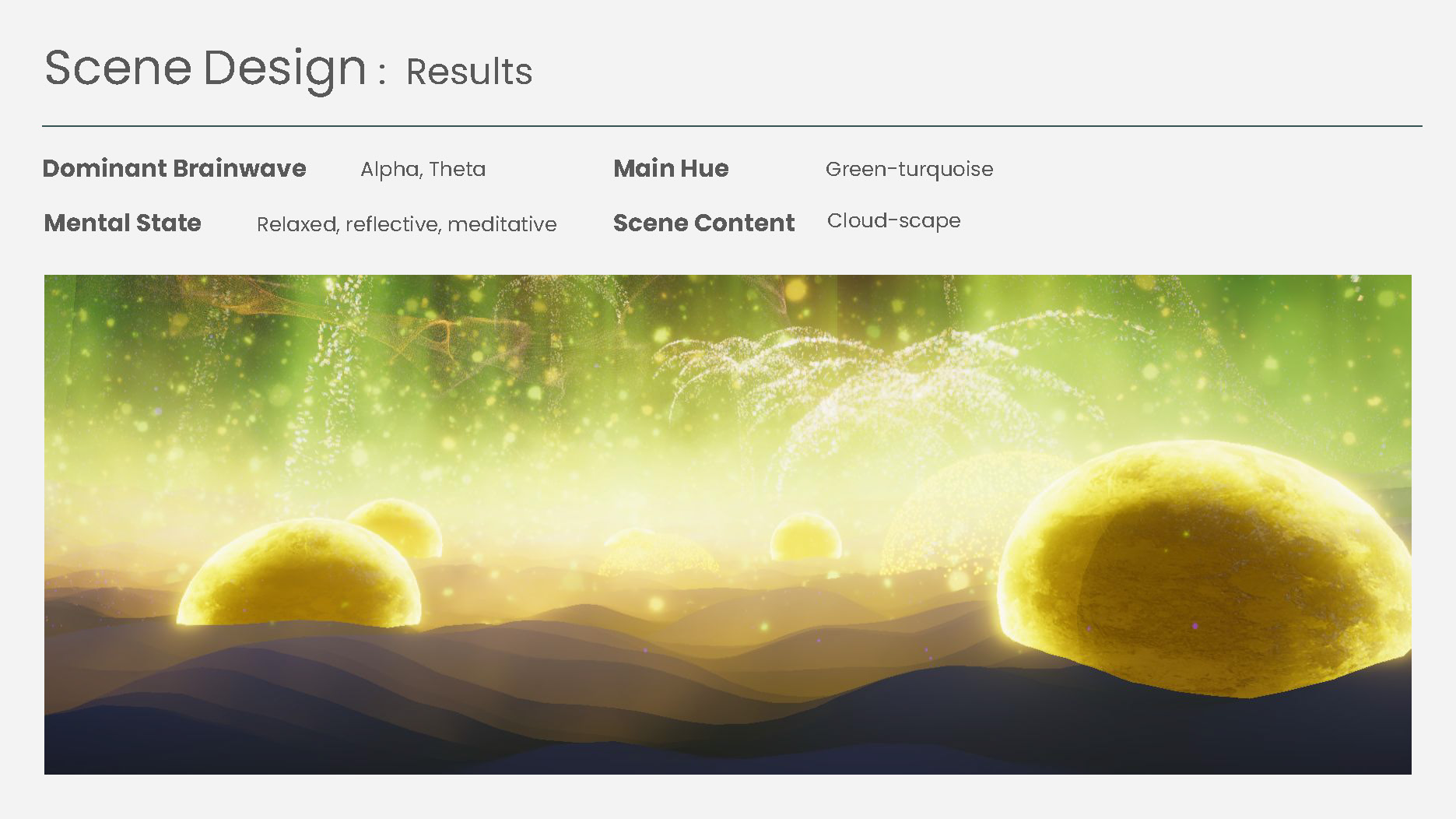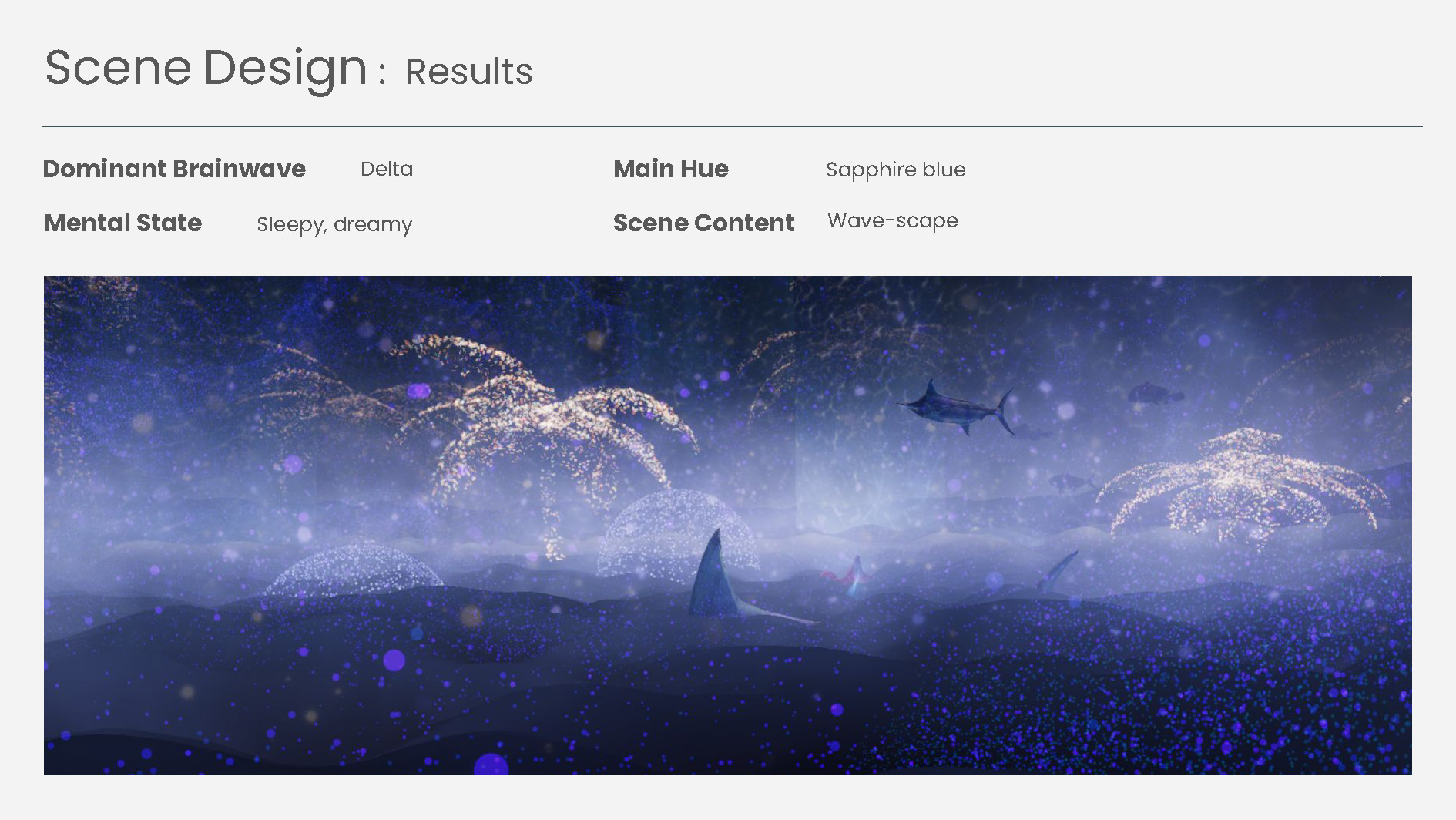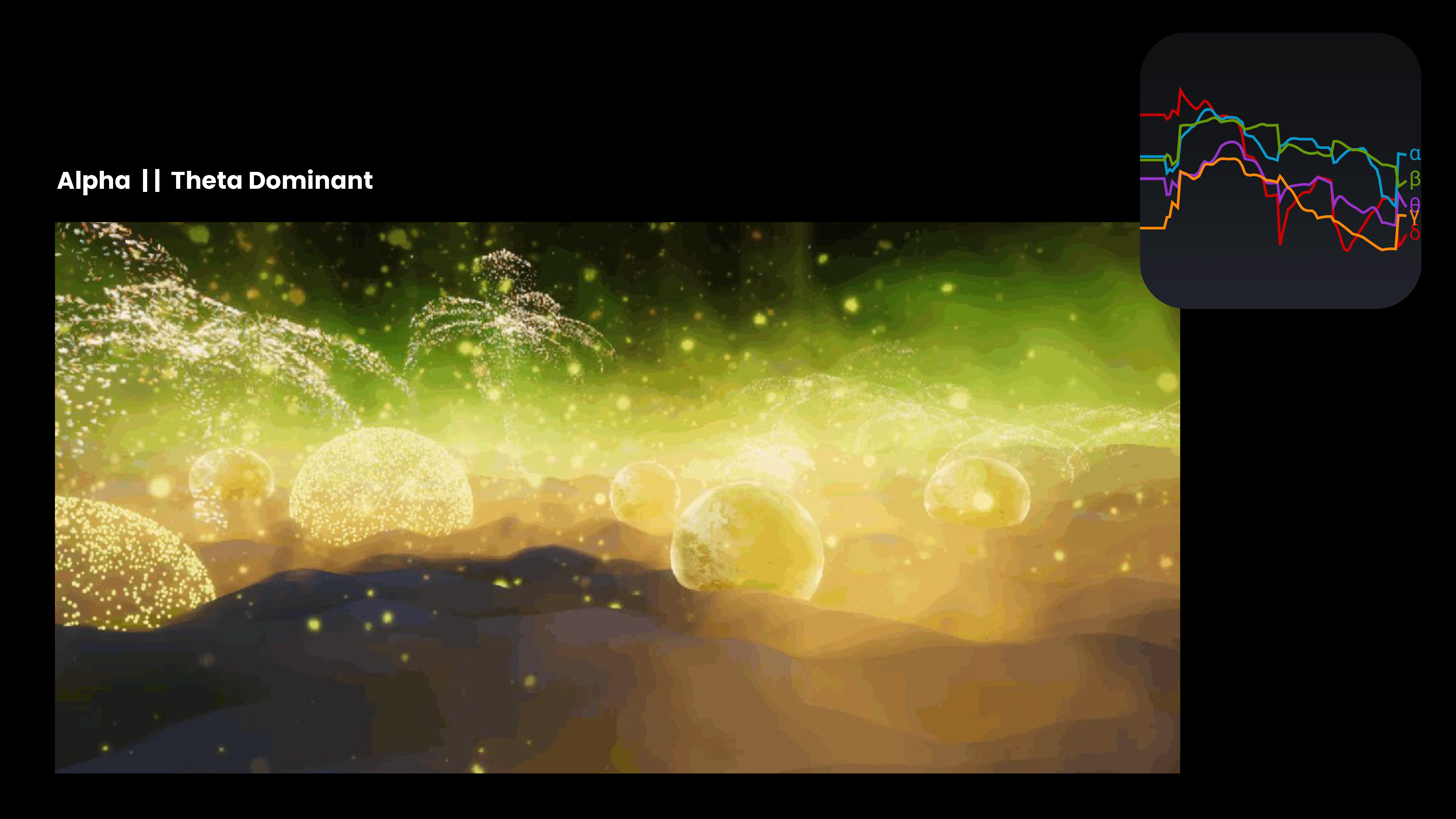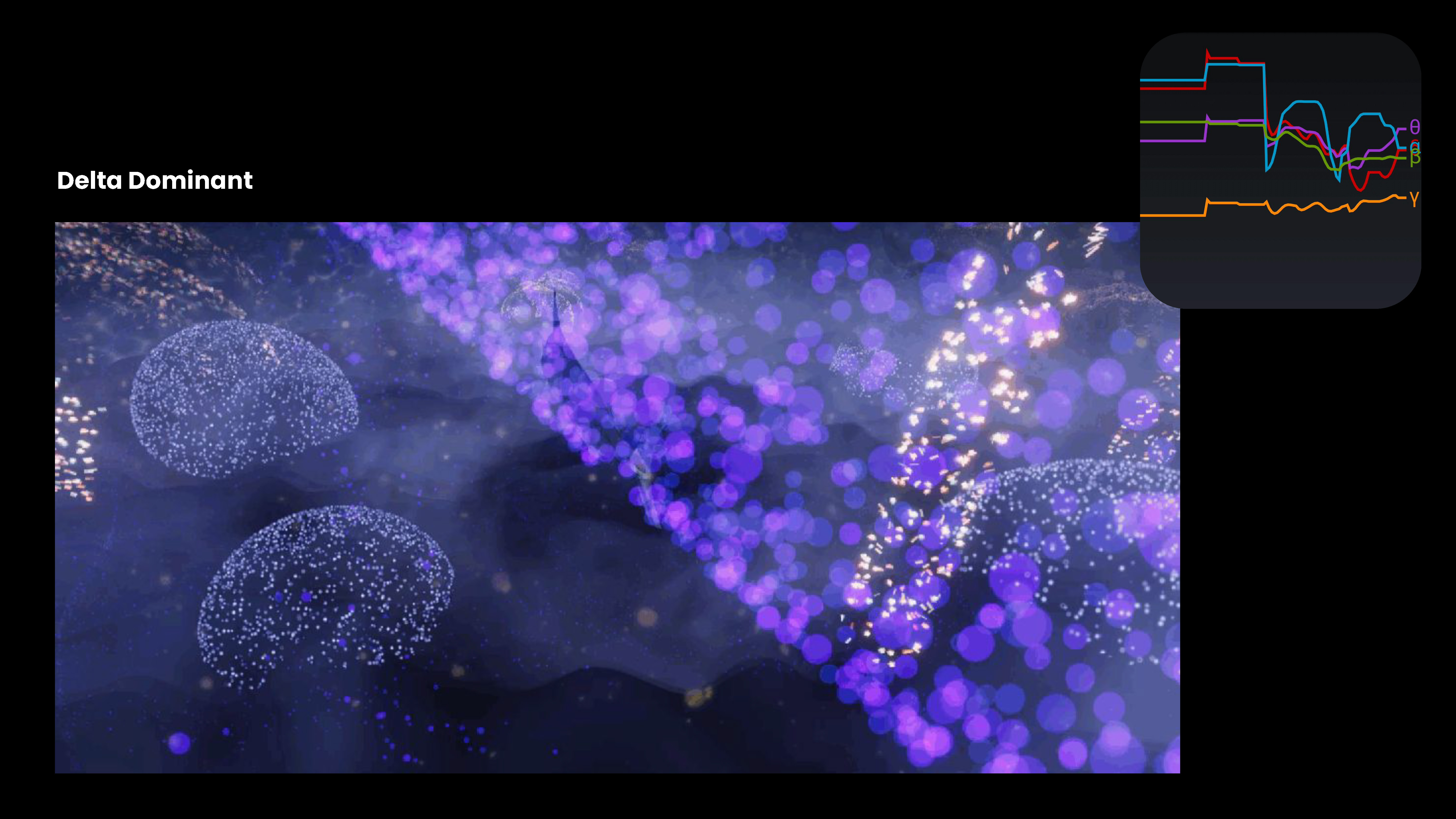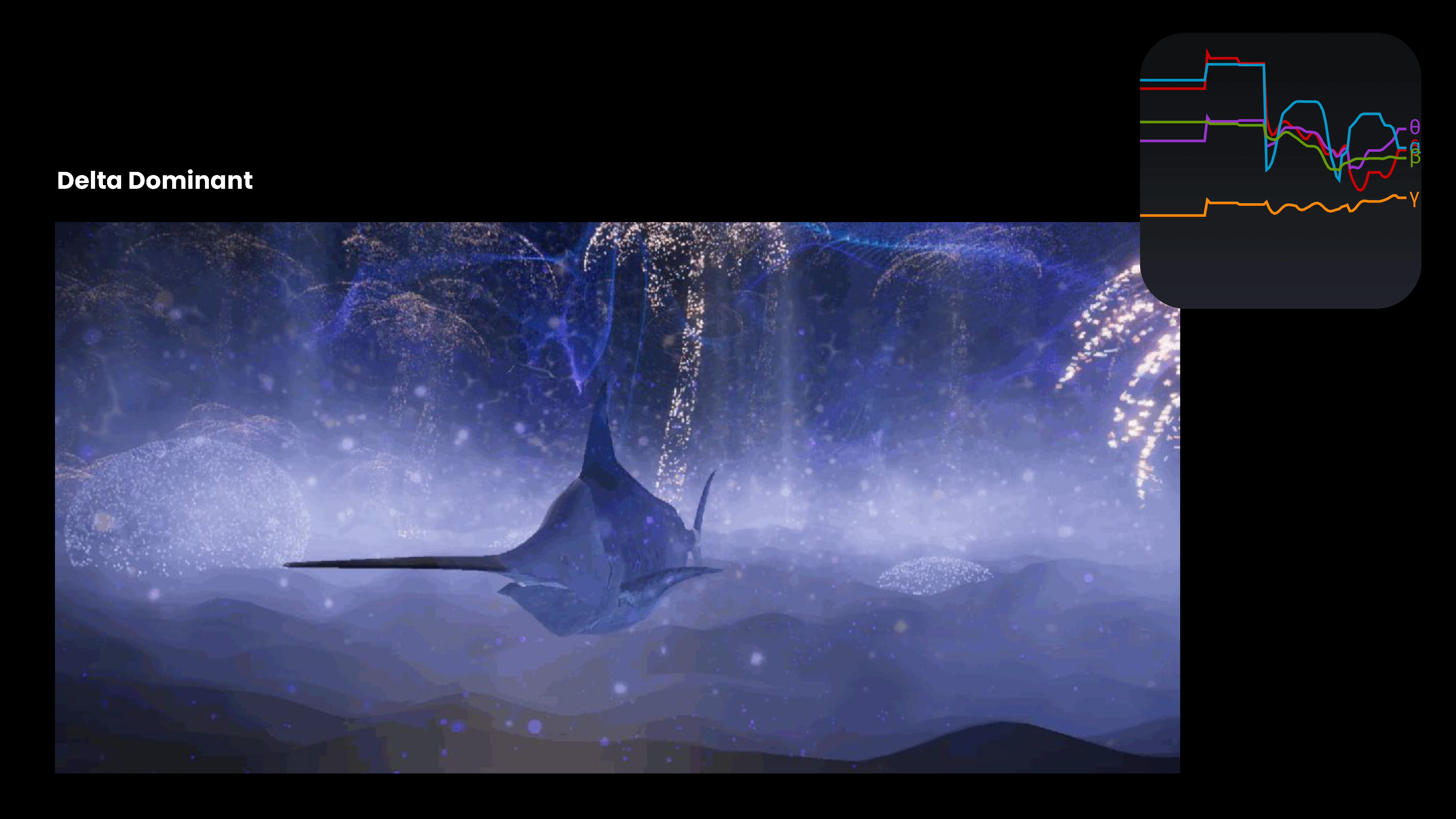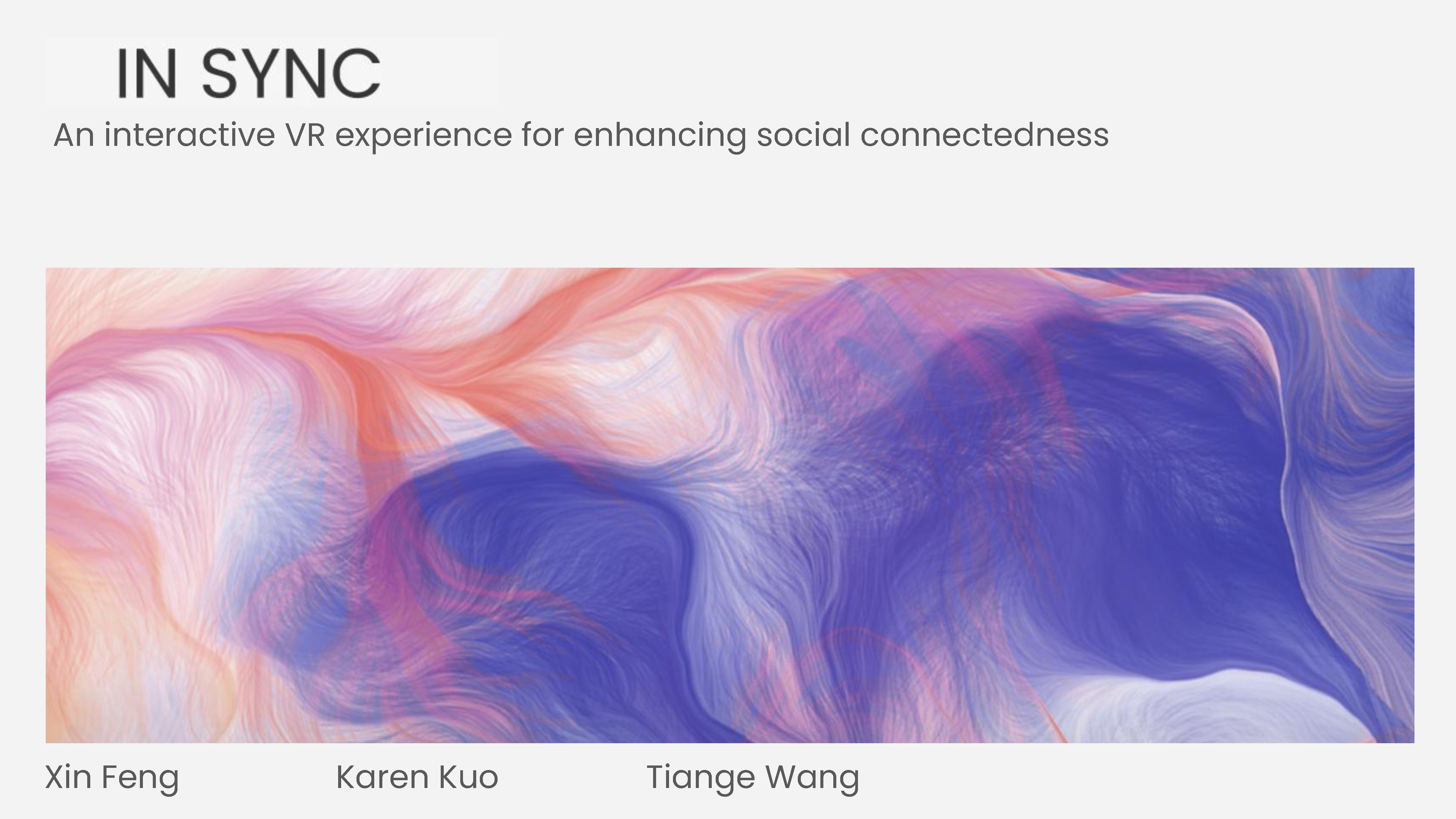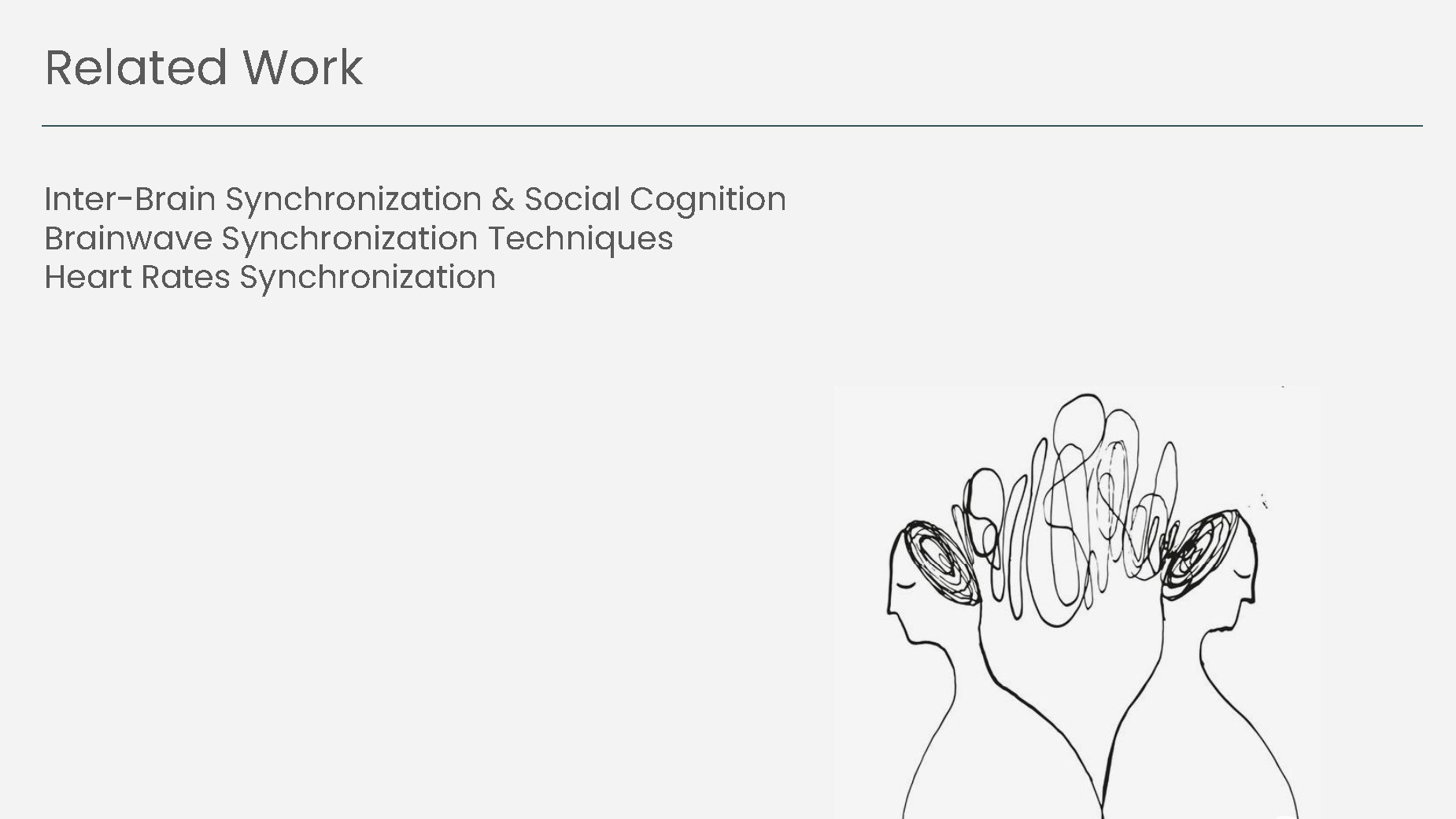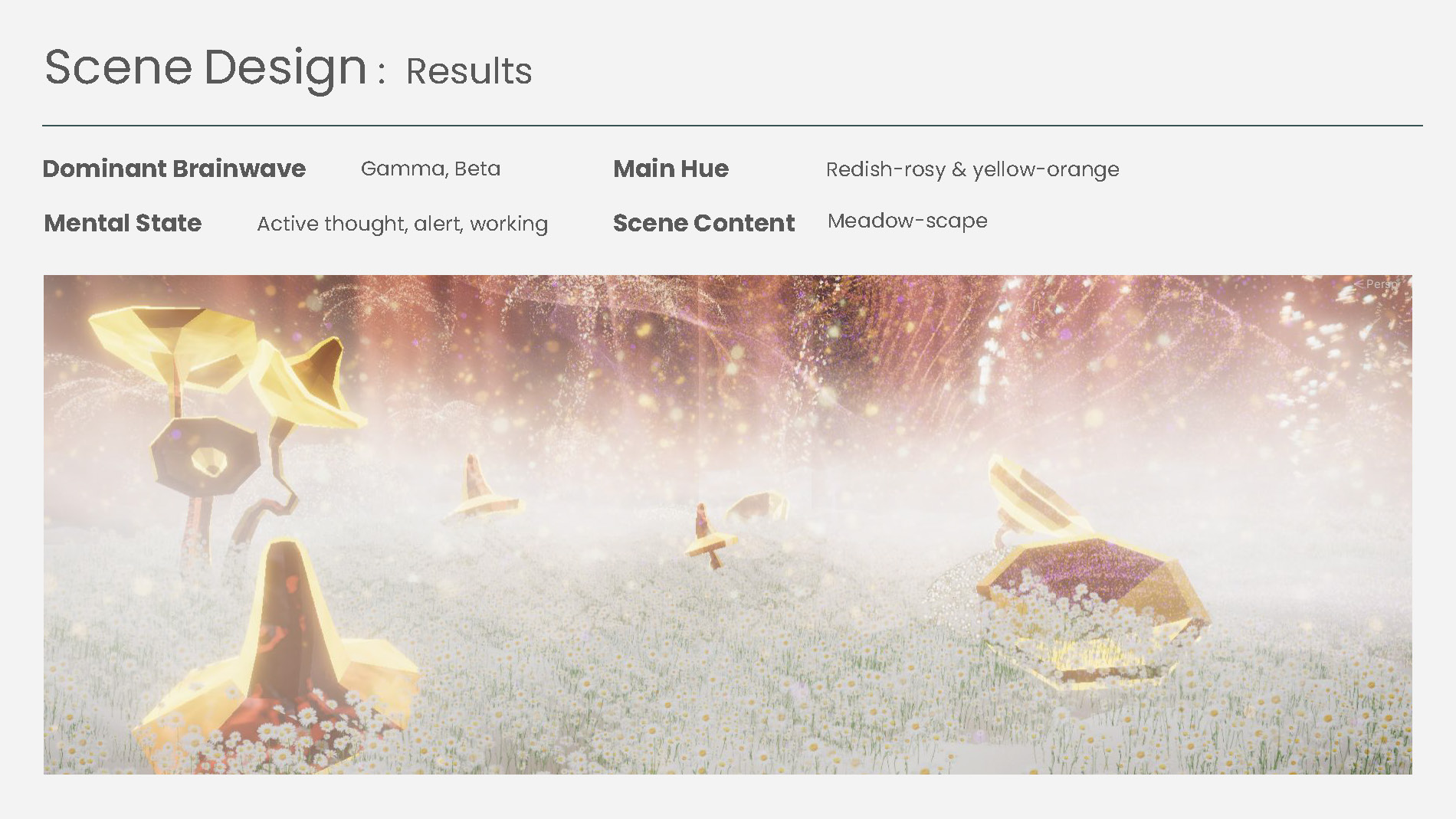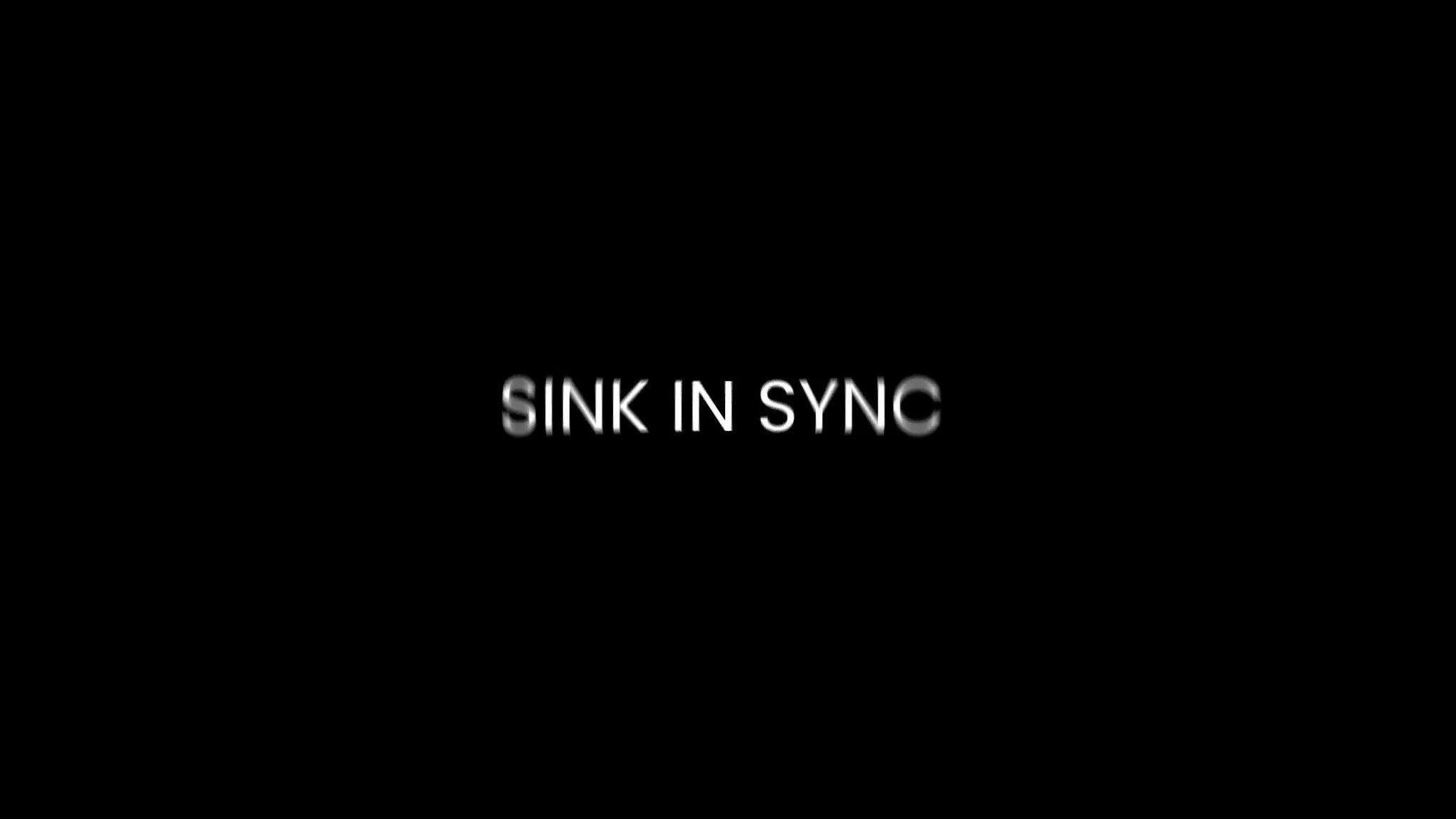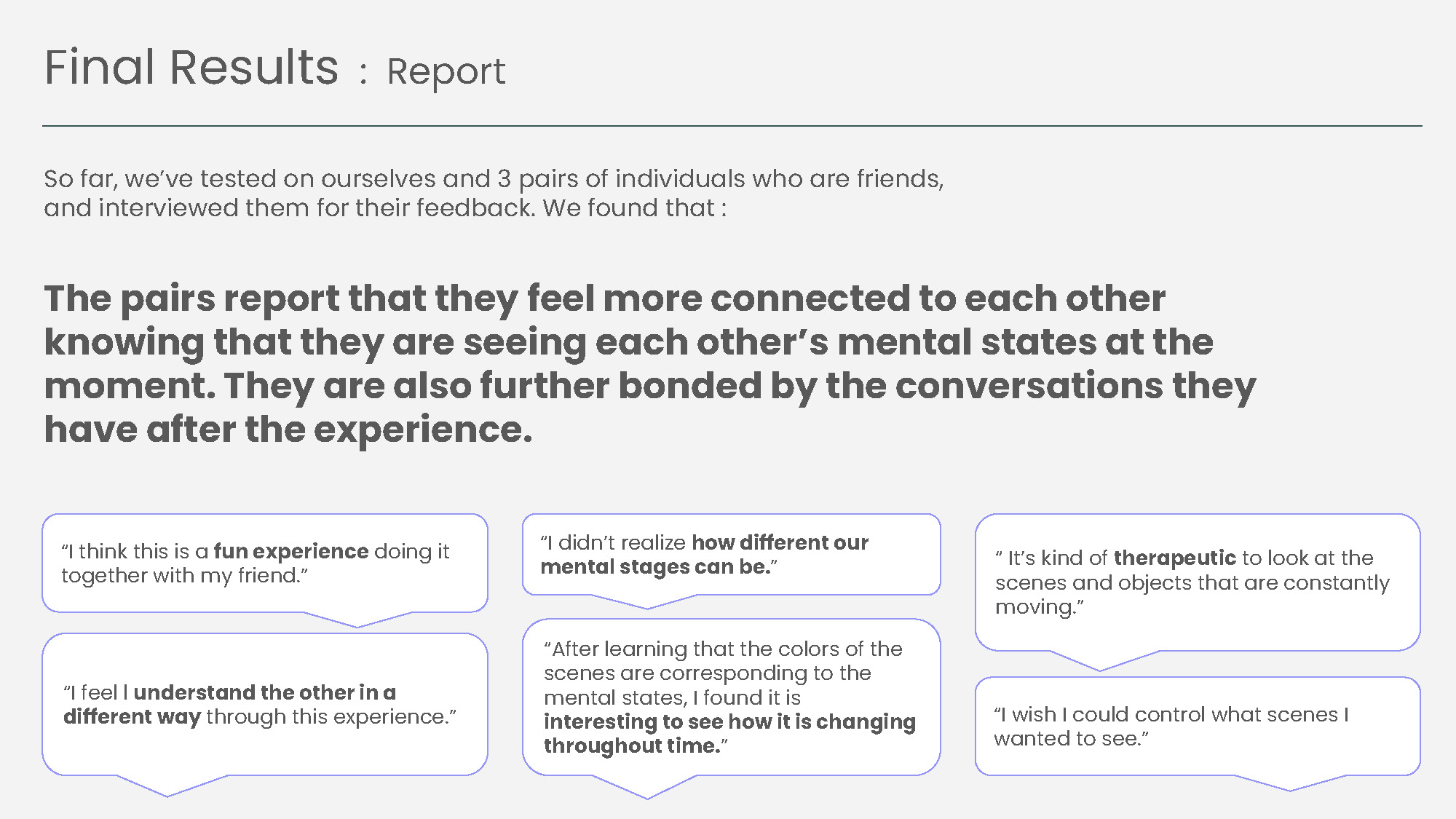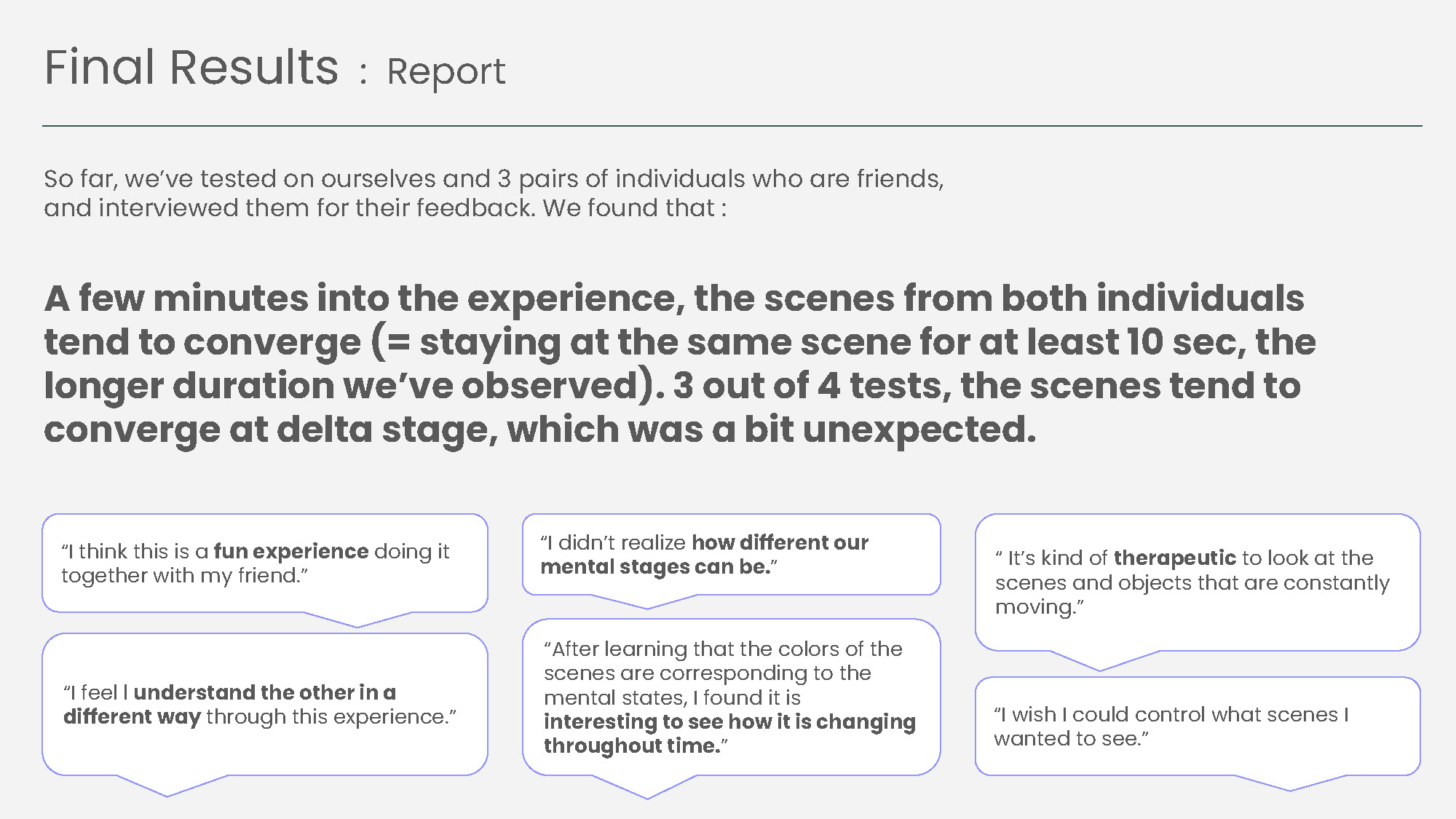Sink in Sync:
Inter-Brain Synchronization
Term Fall 2021 MIT Media Lab
Course Augmented Cognition
Instructor Pattie Maes
Partner Feng Xin, Tiange Wang
Program Unity, Muse, Neurofeedback
Human interactions involve fascinating synchronization: from matching footsteps to mirroring gestures during conversations. This inter-brain synchronization enhances social connectedness, engagement, and cooperation. In today's remote world, virtual inter-brain synchronization offers a unique chance to strengthen bonds and improve mental health. By exploring brainwave entrainment and its potential, we can tap into the profound possibilities of shared connections and well-being.
The project originated from two hypotheses:
1. Brainwave entrainment mechanisms can be utilized to establish mutual bonds and enhance social connectedness
2. Virtual inter-brain synchronization has the potential to improve mental health.

BACKGROUND
Project Inspiration
Recent studies have revealed fascinating phenomena regarding human connections during emotional experiences. When individuals watch emotional films together or when romantic partners share a bed, they exhibit synchronizations in their heart rates and breathing patterns, showcasing a profound interpersonal bond.
Even more astonishingly, these shared experiences extend beyond the physical realm. Research conducted by cognitive scientist Tom Froese, based at the esteemed Okinawa Institute of Science and Technology in Japan, has shown that people also synchronize their neural rhythms during such emotional connections. This groundbreaking revelation challenges our current understanding of consciousness, opening up new avenues for exploring the intricacies of human interaction and its potential impact on our cognitive processes.


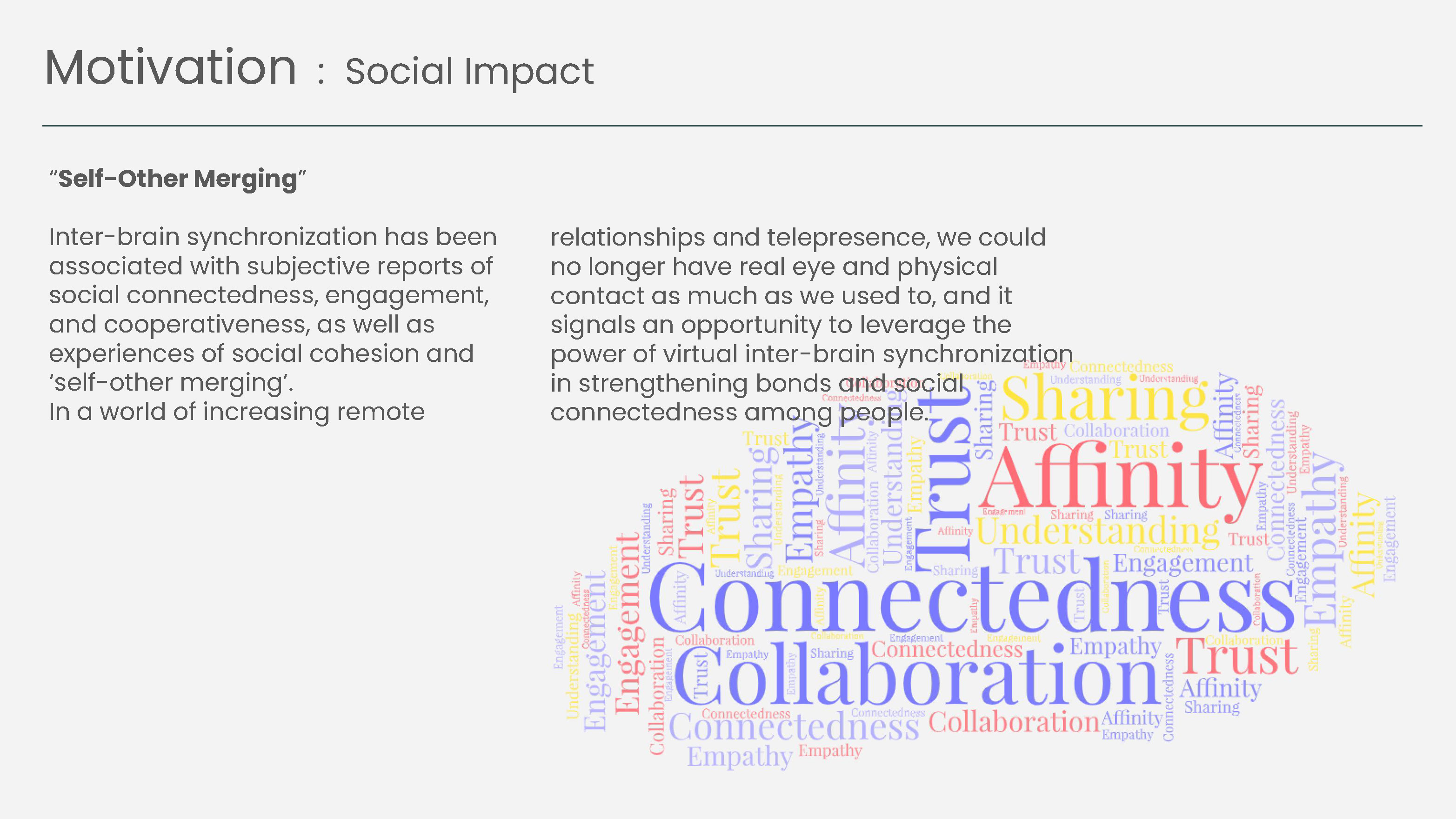

BACKGROUND
Project Objective
Creating a generative audio-visual experience for VR requires significant development effort and resources, and it is beyond the scope of a text-based conversation. However, I can outline a high-level concept for such an experience to facilitate brainwave synchronization between pairs of individuals and enhance positive feelings of social connectedness.
The primary objective is to foster a deep sense of social connectedness and emotional resonance between pairs of individuals by leveraging generative audio-visual stimuli designed to synchronize their brainwave patterns.
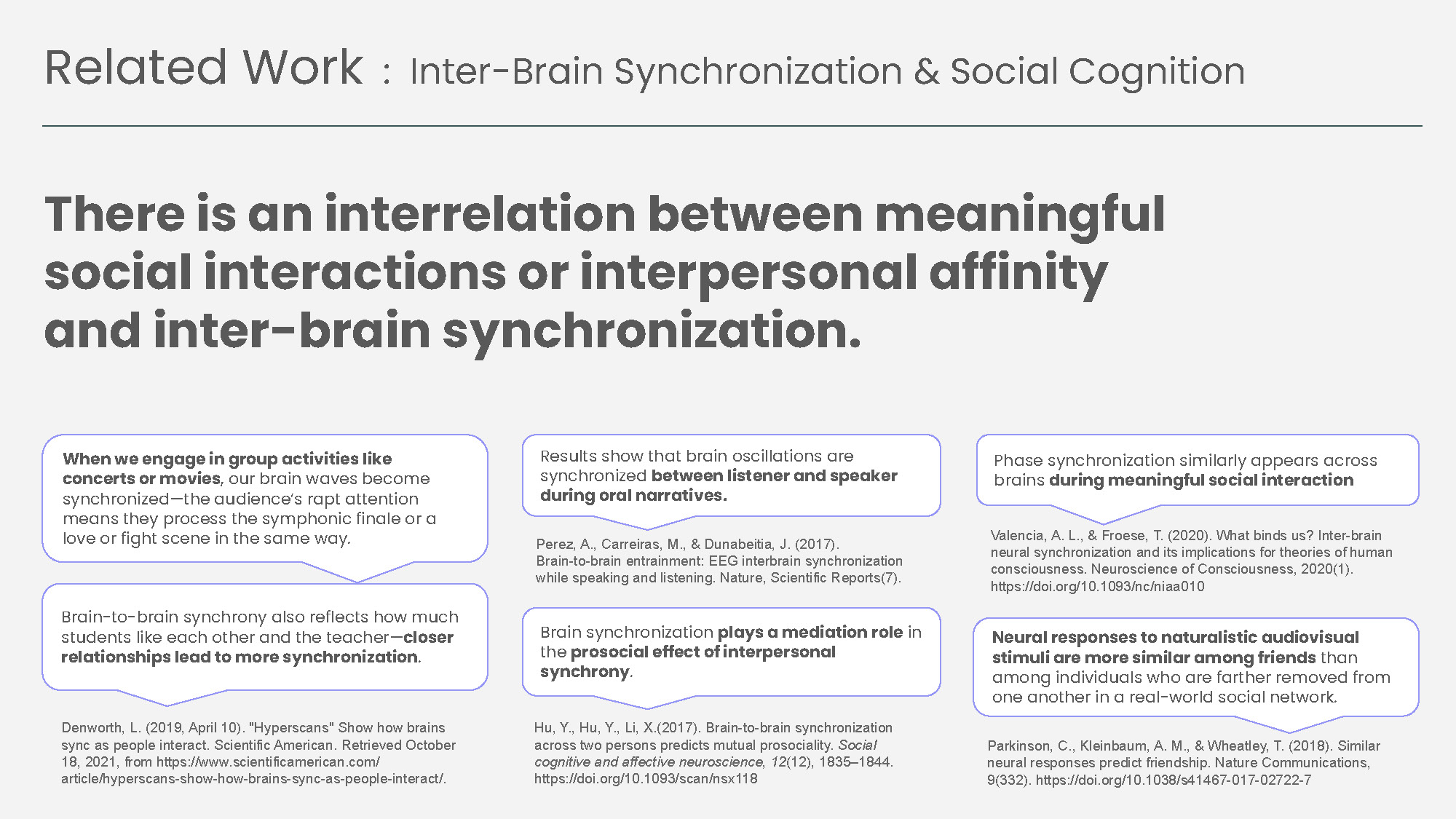
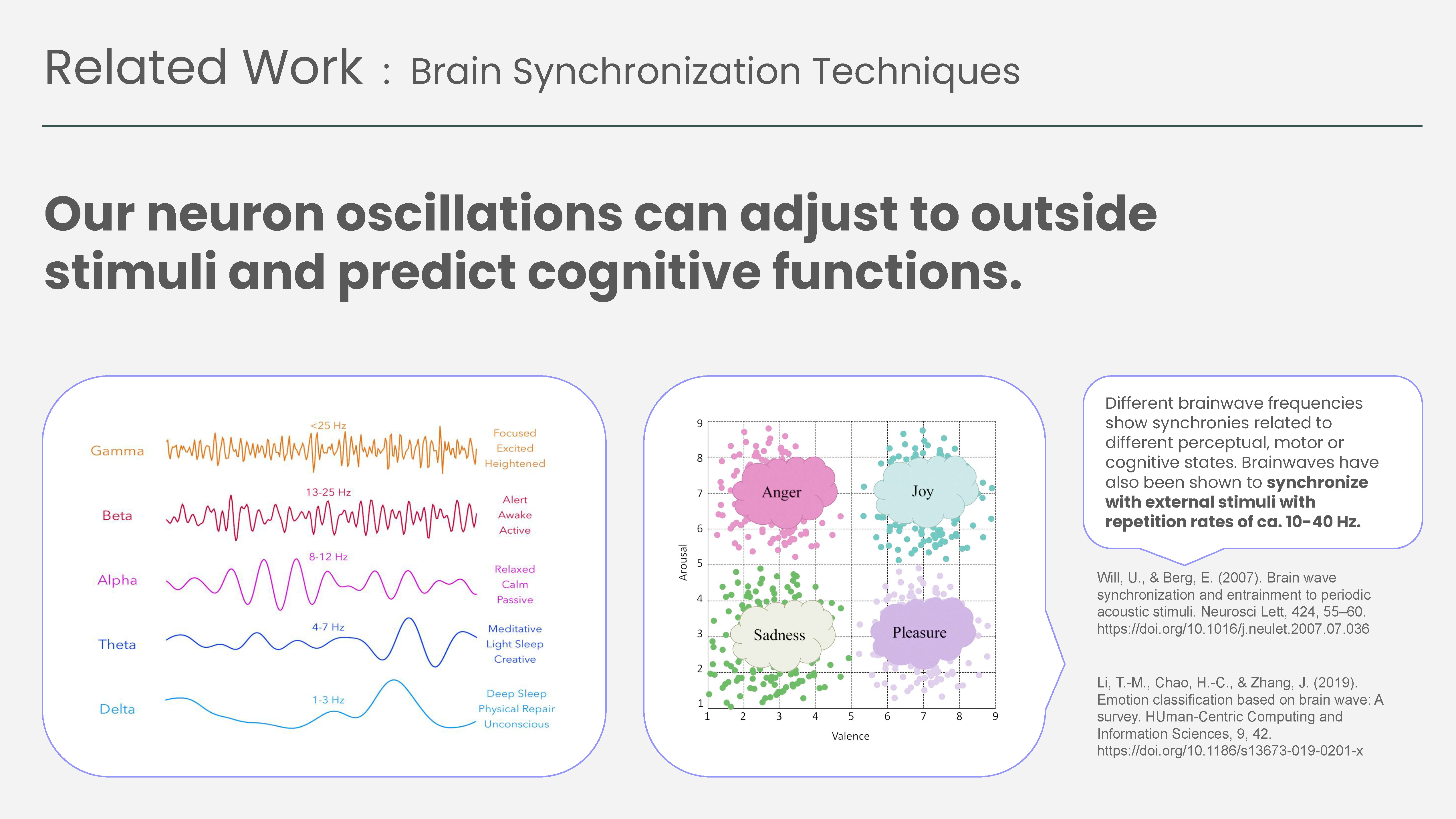


BACKGROUND
Related Work
The scientific foundation of our work lies in previous research that has discovered the capability of brainwaves to synchronize with external stimuli. Proven external stimuli include music modulation, binaural and isochronic beats, sound, light and electromagnetic entrainment. Our work embeds visual and light rhythms, one of the most effective and fastest techniques among the list, in a VR environment that intensifies the experience through immersion.
Potentially closer to our work are research and creative applications that explore the use of biometric input in VR for individual and social experiences. Use heart rate and EDA data to modify the VR environment in real-time and influence the viewer’s body signals in order to help them relax. Project Cave is an art-science installation where light and sound pulses are triggered if the viewers’ brainwaves happen to synchronize at any given moment. SinkInSync differentiates itself from these examples by focusing on a cross-person experience in an VR environment designed to proactively induce brainwave synchronization and enhance social connectedness.


BACKGROUND
Design Rules
The scene design rules associate brainwave frequency bands with the appearance of VR scenes. There are five primary frequency bands that are produced at different mental states.
We designed three scenes to associate with these frequency bands based on their mental state classification: Meadowscape for the active states of Gamma and Beta waves, Cloudscape for the relaxed and meditative states of Alpha and Theta waves, and Wavescape for the sleepy state of Delta waves.
Based on the common narratives about the psychology of colors, we applied different color schemes to the scenes to strengthen their influence towards the corresponding mental states: warm-toned colors to Meadowcape (active), cool-toned colors to Cloudscape (relaxed) and cold-toned colors (sleepy) to Wavescape. We assigned integers from 0 to 4 to each band respectively to represent the band type. The integer of the dominant band type is input to the visibility and color properties of the scenes in the VR environment to signal value change of these properties according to the scene design rules.
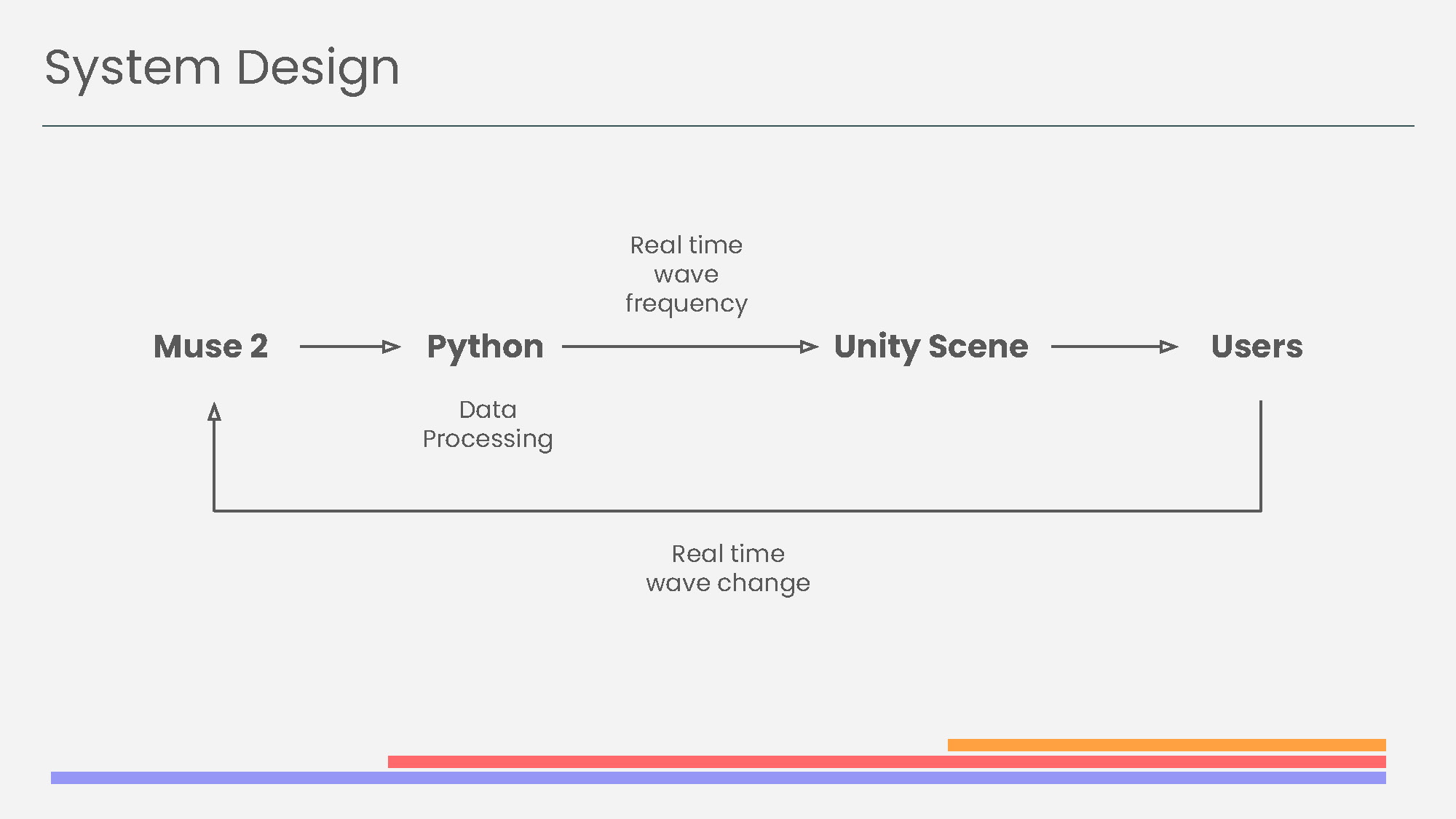

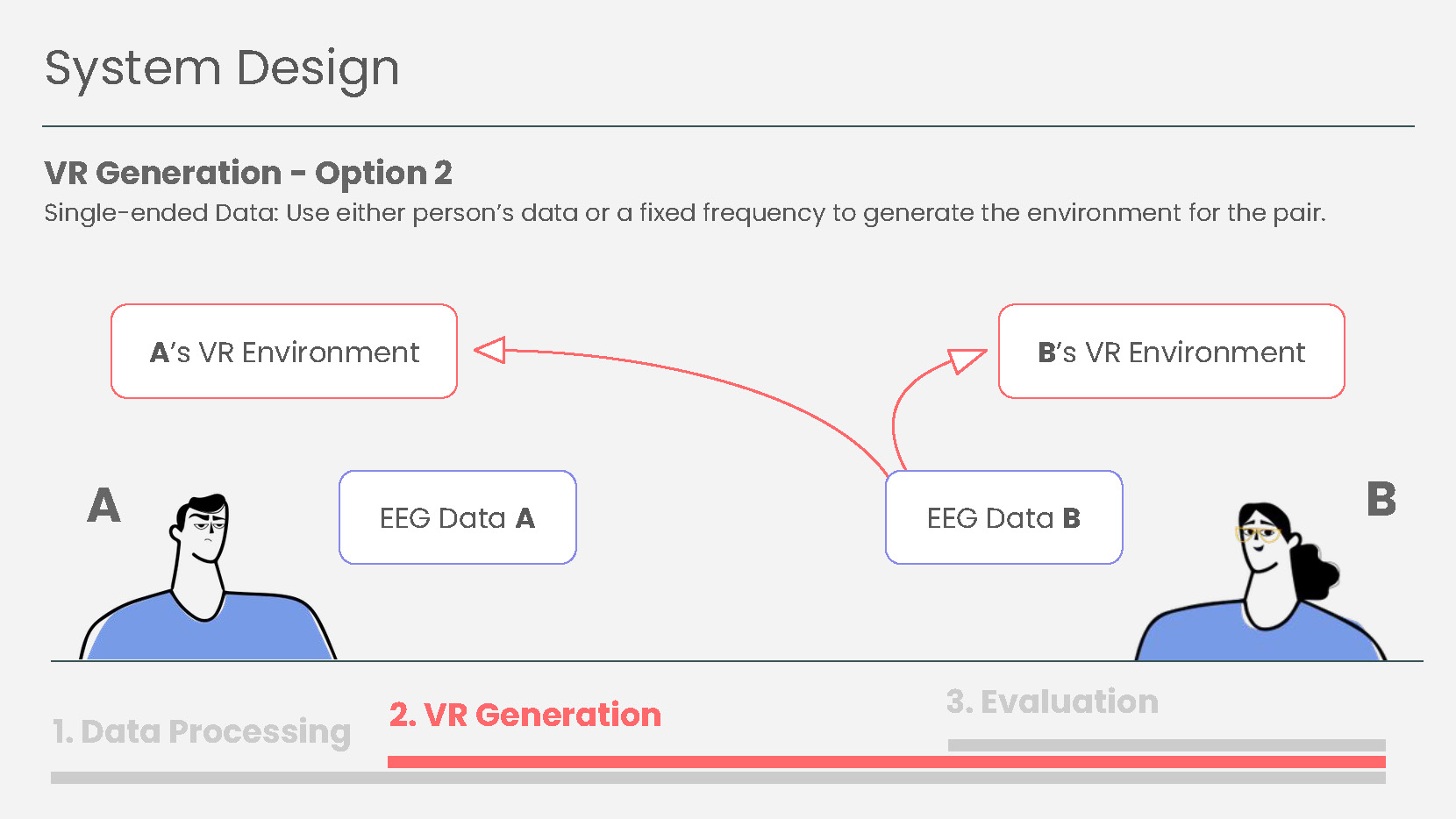
BACKGROUND
System Design
The scene interaction rules associate brainwave frequencies with light pulses and movement speed of the scene content. This is key to generatively modulating the visual rhythms of the virtual environment. We recorded, fed and converted the brainwave frequency data to the animator speed property of mesh objects, lifetime property of particles and scale property of shader objects so that they all appear to be pulsing or moving in coherence with the realtime brainwave input.
The system interactions rules set up two scenarios in which a pair of users can engage in the cross-person experience. In the first scenario, for both users we feed the VR environment associated with one user’s brainwave data to the other user in the pair. It allows for an exchange of mental states that puts the users in each other’s shoes. In the second scenario, both users experience the same environment associated with one of the users in the pair, enabling one user to be guided by the other and eventually reach the guiding user’s mental state.

